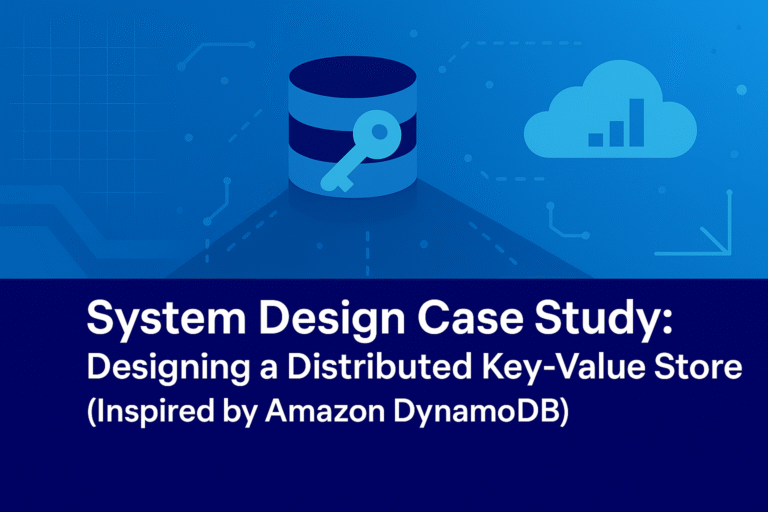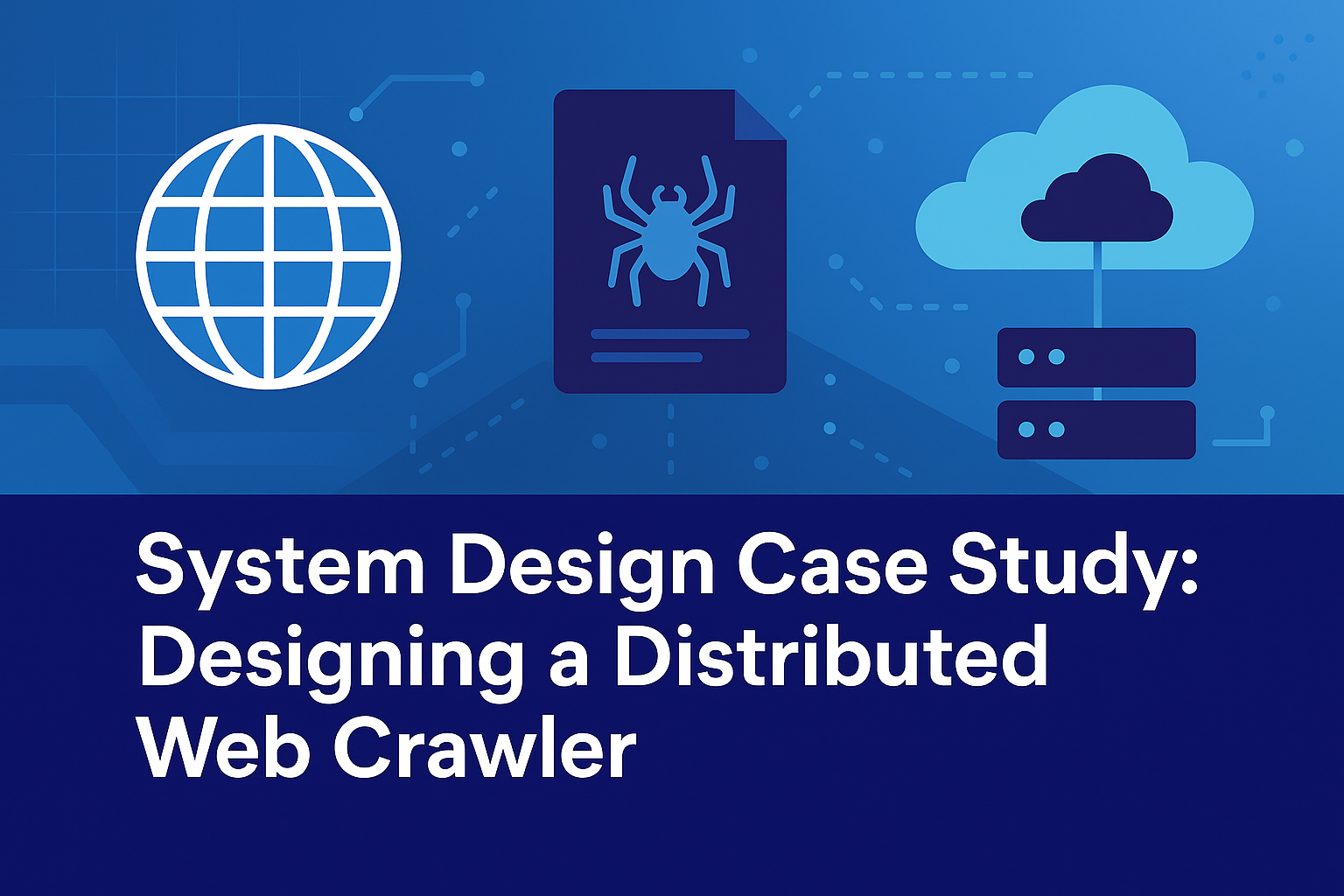Concept Explanation
A proxy server and a reverse proxy are intermediary systems that facilitate communication between clients and servers, but they differ fundamentally in their orientation, purpose, and operational context. These technologies play pivotal roles in modern network architectures, addressing challenges such as security, performance, scalability, and resource optimization. Understanding their distinctions is essential for system design interviews and the development of robust, distributed systems.
A proxy server, often referred to as a forward proxy, operates on the client side, acting as an intermediary that forwards requests from clients to external servers on the internet or internal networks. Its primary functions include anonymizing client identities, enforcing content filtering, caching content to reduce bandwidth usage, and logging traffic for auditing purposes. The proxy receives a request from the client, modifies it (e.g., by masking the client’s IP address), sends it to the target server, and relays the response back to the client. This client-facing orientation makes proxies valuable for individual users or organizations seeking to control or enhance outbound traffic.
In contrast, a reverse proxy operates on the server side, serving as an intermediary that receives incoming client requests and forwards them to one or more backend servers. Its key roles include load balancing to distribute traffic across multiple servers, enhancing security by shielding backend infrastructure, caching static content for performance, and enabling SSL termination to offload encryption tasks. The reverse proxy presents a single public-facing entry point, concealing the complexity and number of backend servers, which is critical for high-traffic web applications and services.
Both proxies and reverse proxies leverage protocols such as HTTP, HTTPS, and SOCKS, but their application contexts dictate their design and implementation. Proxies are typically deployed to enhance client-side experiences or enforce organizational policies, while reverse proxies are integral to server-side architectures, supporting scalability and resilience. This detailed exploration delves into their mechanisms, real-world examples, implementation strategies, trade-offs, and strategic decisions, providing a thorough foundation for technical professionals.
Real-World Example: Corporate Network Security with a Forward Proxy and Web Application Load Balancing with a Reverse Proxy
Forward Proxy Example: Corporate Network Security at IBM
Consider a multinational corporation like IBM, which employs a forward proxy to secure and manage internet access for its 300,000 employees worldwide. The proxy server, deployed in each regional office (e.g., Bangalore, New York, London), intercepts all outbound HTTP/HTTPS requests from employee devices. For instance, an employee in Bangalore attempts to access www.facebook.com. The proxy, configured with Squid on a Linux server, checks the request against a predefined policy that blocks social media sites. The request is denied, and a 403 Forbidden response is returned, logged with the employee’s IP, timestamp, and attempted URL.
Additionally, the proxy caches frequently accessed internal resources, such as a 50MB software update file hosted on IBM’s internal server. If another employee requests the same file, the proxy serves it from its 500GB cache, reducing bandwidth usage from the origin server by 70% and lowering latency from 200ms to 10ms. The proxy also anonymizes the employee’s public IP (e.g., masking 192.168.1.10 as 203.0.113.5), enhancing privacy when accessing approved external sites like www.ibm.com/support.
Reverse Proxy Example: Web Application Load Balancing at Amazon
Imagine Amazon’s e-commerce platform handling peak traffic during a Prime Day sale on September 26, 2025. A reverse proxy, implemented using NGINX and integrated with AWS Elastic Load Balancer (ELB), manages incoming requests from millions of users globally. A user in Mumbai requests www.amazon.in/product123, and the DNS resolves to the nearest PoP via anycast routing. The reverse proxy receives the request, applies load balancing to distribute it across a pool of 200 EC2 instances in the Mumbai region, selecting the least-loaded server based on response time (e.g., < 150ms).
The proxy caches static content, such as product images (e.g., a 200KB JPEG), serving it directly from memory with a 90% cache hit rate, reducing origin server load. It also terminates SSL/TLS connections, decrypting HTTPS traffic and forwarding unencrypted requests to backend servers, offloading cryptographic overhead. Furthermore, the proxy integrates with AWS WAF to block a detected SQL injection attempt (e.g., ‘ OR 1=1 –), returning a 403 response and logging the incident. This setup ensures 99.99% uptime and handles 50,000 requests/second during peak load.
Implementation Considerations
Forward Proxy Implementation for IBM
- Deployment: Install Squid on a dedicated Ubuntu server with 16GB RAM and 1TB SSD, configured as a transparent proxy via iptables rules to intercept traffic from the corporate LAN (e.g., 192.168.0.0/16).
- Configuration: Define access control lists (ACLs) to block categories (e.g., acl blockedsites dstdomain .facebook.com .twitter.com), cache objects with a TTL of 24 hours, and set a bandwidth cap of 5Mbps per user. Integrate with LDAP for single sign-on (SSO) authentication.
- Security: Enable HTTPS inspection with a corporate CA certificate, log all requests to a centralized SIEM (e.g., Splunk), and apply rate limiting (100 req/min/IP) to prevent abuse.
- Monitoring: Use Grafana to track cache hit rate (> 80%), latency (< 50ms), and bandwidth usage (10Gbps total), with alerts for policy violations.
Reverse Proxy Implementation for Amazon
- Deployment: Deploy NGINX on Kubernetes clusters across AWS regions (e.g., ap-south-1), with ELB as the entry point. Use auto-scaling groups to add 10 instances when CPU exceeds 75% for 5 minutes.
- Configuration: Set up virtual hosts for domain routing (e.g., server_name amazon.in;), configure round-robin load balancing with health checks every 5 seconds, and cache static assets with a TTL of 12 hours. Enable SSL termination with Let’s Encrypt certificates.
- Security: Integrate AWS WAF with rules to block common attacks (e.g., XSS, SQLi), enforce rate limiting (1,000 req/s/IP), and use geo-restrictions to deny traffic from high-risk regions.
- Monitoring: Implement Prometheus for metrics (p99 latency < 200ms, throughput 50k req/s), with dashboards in Grafana and logs archived to CloudWatch for 30 days.
Trade-Offs and Strategic Decisions
Forward Proxy Trade-Offs and Decisions
- Anonymity vs. Performance: Anonymizing IPs via NAT increases privacy but adds 5ms latency per request due to address translation. The decision favors anonymity for sensitive industries, mitigated by optimizing NAT tables.
- Caching vs. Storage Cost: Caching 500GB reduces bandwidth costs ($1,000/month) but requires $200/month in storage. A strategic choice is to cache only high-traffic files (> 100 hits/day), balancing cost and efficiency.
- Security vs. Usability: Strict filtering blocks 20% of legitimate sites (e.g., cloud services), traded for compliance. The decision adopts a whitelist approach for critical sectors, with exceptions reviewed quarterly.
Reverse Proxy Trade-Offs and Decisions
- Load Balancing vs. Latency: Distributing traffic across 200 servers ensures 99.99% uptime but introduces a 10ms overhead due to routing. The strategy uses anycast to minimize latency, prioritizing user experience.
- Security vs. Throughput: WAF inspection reduces throughput by 15% (e.g., 50k to 42.5k req/s) to block 99% of attacks. The decision implements selective inspection (e.g., POST requests only), balancing security and performance.
- Caching vs. Consistency: Caching static content achieves a 90% hit rate but delays updates by 12 hours. The choice sets short TTLs (1 hour) for dynamic pages, ensuring freshness for e-commerce.
- Cost vs. Scalability: Adding 10 PoPs costs $15,000/month but supports 100k req/s peaks. The strategic decision targets high-traffic regions (e.g., India, US), validated by ROI analysis.
Conclusion
Proxies and reverse proxies serve distinct purposes—forward proxies enhance client-side security and efficiency, while reverse proxies optimize server-side load balancing and protection. Real-world examples from IBM and Amazon illustrate their applications, with detailed implementation and trade-off considerations guiding design decisions. This comprehensive understanding.




